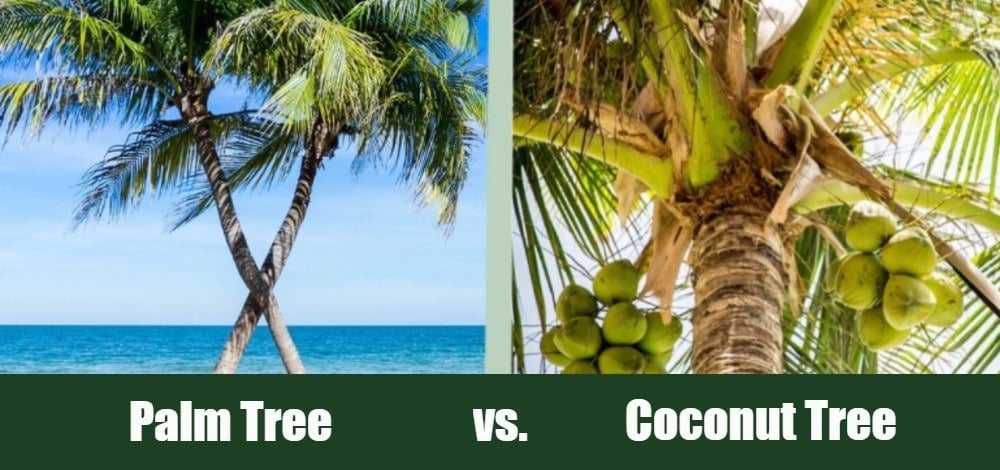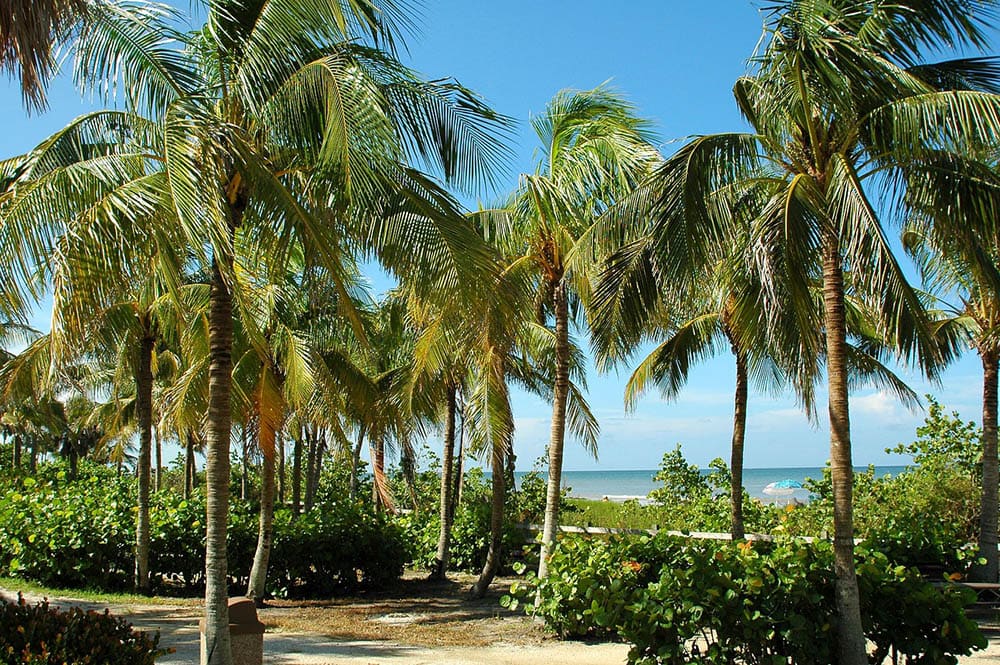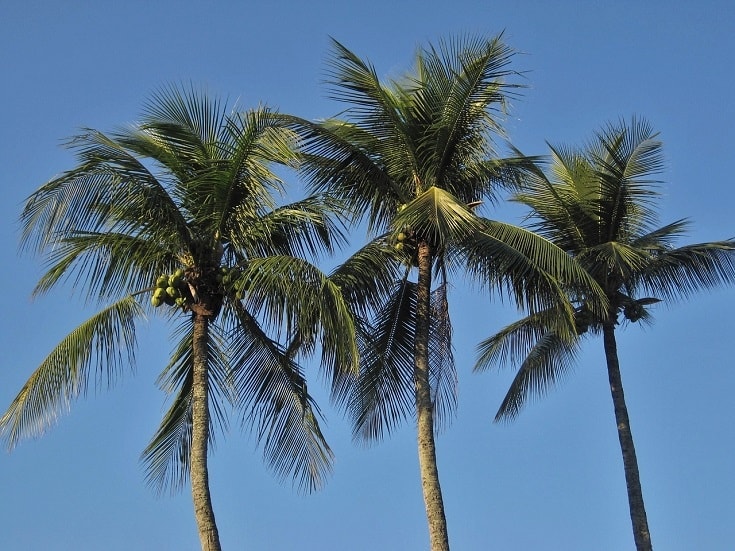Palm Tree vs Coconut Tree: What’s the Difference? (with Pictures)
-
Pete Ortiz
- Last updated:

A palm tree is one of the most easily recognized trees in the world. Even people who have spent most of their lives in deep winter weather know one when they see it. It’s such an iconic tree that always makes an appearance in our favorite movies, TV shows, and other media. If there’s a beach nearby, you can guarantee you’ll see at least one palm tree.
But what about coconut trees? Are they the same thing? While it’s true that coconut trees and palm trees are similar, there are some distinct differences. Technically, all coconut trees are palms, but not all palm trees have coconuts.
We’ll review some of the most significant indicators between palm and coconut trees that will help you tell them apart.
How To Recognize a Palm Tree?

The term “palm tree” is an umbrella for any type of tree that falls under the Palmaceae flora class. This class alone has over 3,000 species and more than 230 families found worldwide. In the United States, they are primarily found in California and Florida. That’s because palm trees tend to thrive in tropical or subtropical climates.
Ancient palm tree remains have even been found in the frigid regions of Antarctica! It is theorized that the polar continent was once covered with palms before the dramatic climate change that froze the region.
Palm trees can thrive either planted in the ground or in a pot. Smaller palm trees can easily be potted and are usually found in people’s backyards or rooftop gardens. Even though the trees have remarkably hard trunks, they are internally the same as other species of trees and can produce fruits and flowers.
Palm Tree Leaves
All palm trees can be easily identified by their leaves. Their leaves are called fronds and are shaped like a fan. Their structure is made of sections that grow outward from their main branch. The length of a palm tree leaf can vary depending on its species. While some palms have short, spiky fronds, other palm fronds can grow as long as 10 feet.
Palm Tree Trunks
Palm tree trunks also vary from species to species. Some palm trees have thick, squat trunks. Others have very thin, tall, and scaly trunks. You can also find thin, reedy trees that have small heads with fronds on top.
Palm Tree Height
Palm trees differ wildly in height, and some varieties grow up to 197 feet tall! Usually, you’ll find tall palm trees near beaches or in jungles since they are free to grow as tall as possible.
Palm trees planted near buildings or establishments are kept maintained so they don’t grow as tall. In some parts of the United States, it is common to use palm trees for landscaping.
- Very sturdy
- Some are fruit-bearing
- Offers little shade
- Difficult to dispose of large droppings
How to Recognize a Coconut Tree?
The coconut tree (Cocos nucifera) is also called coconut palm. This particular palm has a long, leaning trunk that has a smooth texture. They can grow 80–100 feet tall when left to their own devices. They are widely recognized for their pinnate leaves, yellow flowers, and signature fruit.
Coconut Tree Fruit
The most defining feature of a coconut tree is its fruit. Coconut trees begin to bear fruit once they are 4-5 years old. The giant fruits require an additional 6 months to a year before reaching full maturity, and a single coconut tree can produce about 25 coconuts each year.
However, the fruit doesn’t have to be fully mature to harvest. The young coconut is often sweeter and softer than fully matured fruits.
Coconut Tree Trunk
Coconut tree trunks have a much lighter color than other palm trees. They also have a smoother texture and are seldom scaly. Their trunks can grow incredibly tall but rarely ever grow completely vertical. Often, you’ll find coconut trees that are growing bent or curled, and some varieties even grow in a spiral shape!
However, coconut trees used for landscaping are maintained to keep them straighter. In many countries, particularly parts of Asia, the coconut tree trunk is used as lumber in the construction of homes and farming-related buildings.
Coconut Tree Roots
As the coconut tree grows taller, its roots extend deeper into the ground. This helps them live up to a century in the wild. Because of its deep roots, it can withstand the most extreme weather conditions, including monsoons and typhoons.
For this reason, coconut trees are often called the “three-generation trees” since they can bear fruit for the person who planted them, their children, and future grandchildren.
- Has many uses
- Fruit-bearing
- Trees produce less as they age
The Differences Between a Palm Tree and a Coconut Tree?
It’s hard to say that there are definitive differences between palm trees and coconut trees because coconut trees are palms. They both have the same leaves, and both produce fruits. However, the distinguishing factors are the trunks and fruits. Palm trees typically have textured and scaly trunks, but coconut trees rarely have scales and are lighter in color.
If you’re ever confused between the two, just check out the fruit the tree is bearing! A coconut tree produces hard coconuts, but other palms produce smaller fruits like dates.
However, palm and coconut fruit will fall off the trees once they reach maturity. So, make sure to watch your head whenever you walk underneath them!
Related Reads:
- White Oak vs Red Oak Tree: What’s the Difference?
- 35 DIY Tree House Plans for Kids & Adults You Can Build Today
Contents



